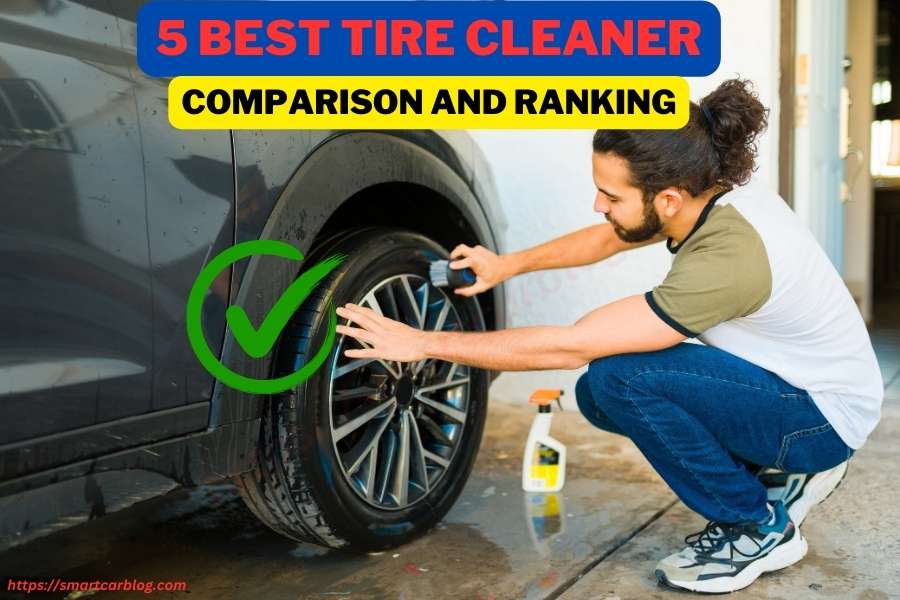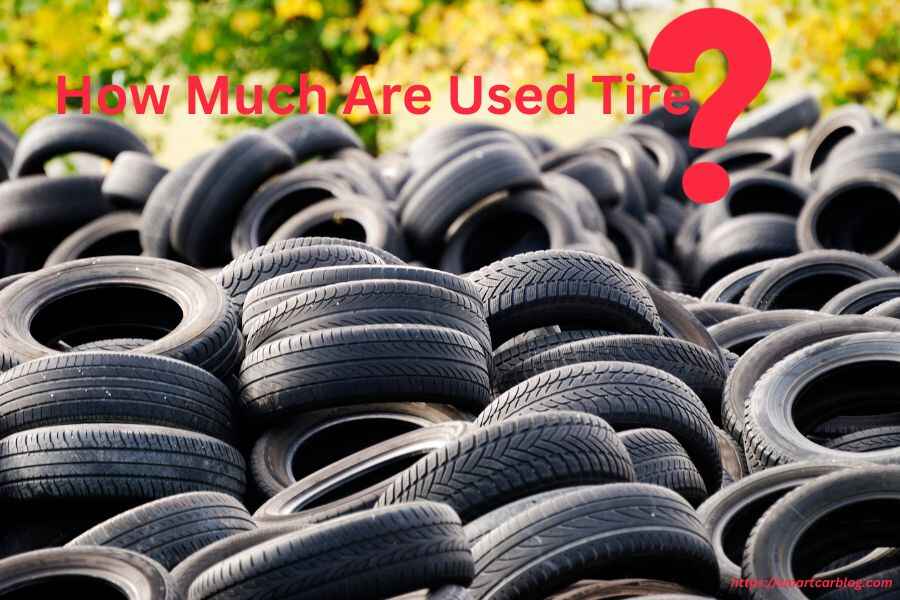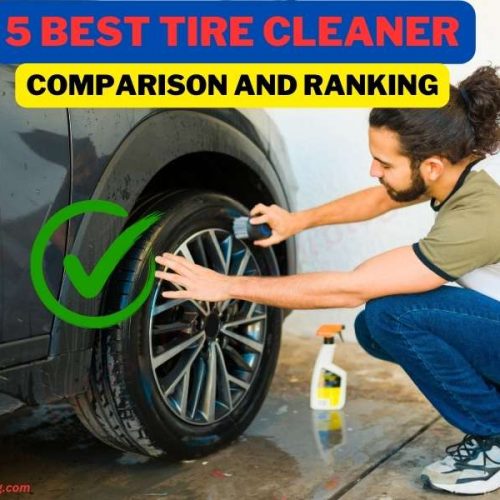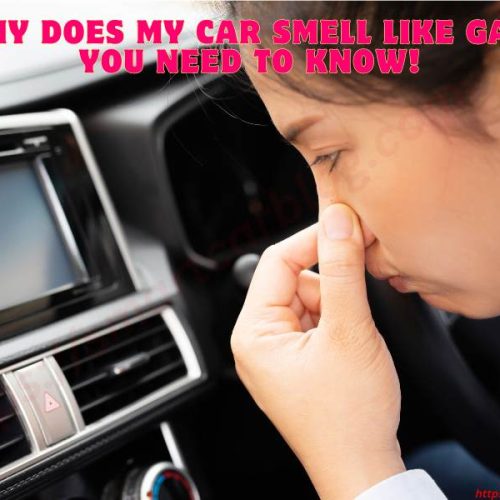If you’ve ever wondered, “How much are used tire,” you’re not alone. For many budget-conscious drivers, exploring the used tires can be both a practical and economical choice. Used tires offer a middle ground between brand-new and worn-out rubber, providing a viable option for those looking to save money without compromising safety and performance.
In this exploration, we drive into the world of used tires, uncovering their value, lifecycle, and the factors that influence their pricing. Buckle up as we navigate the terrain of affordability and reliability, answering the question that has piqued the curiosity of many: just how much are used tires?
Table of Contents
ToggleUnderstanding the World of Used Tires
When it comes to the question, “How much are used tires,” it’s crucial to understand the world of used tires comprehensively. Used tires, as the name suggests, are tires that have been previously owned and utilized on vehicles. They undergo a cycle that involves several stages, from the moment they are manufactured to the point where they become used tires ready for resale.
What are Used Tires?
Used tires are essentially tires that have been on the road before but still have substantial tread depth and structural integrity. Many drivers opt for used tires as an affordable alternative to brand-new ones. These tires, once carefully inspected and refurbished, can offer excellent performance at a fraction of the cost of new tires.
When considering how much is used tires, it’s essential to take into account their quality and the seller’s reputation. Reputable dealers ensure that these tires meet safety standards, providing customers with reliable options for their vehicles.
The Lifecycle of a Tire
Understanding the lifecycle of a tire is vital in grasping the concept of used tires. A tire’s journey begins in the manufacturing process, where it is meticulously crafted to meet specific standards. Once a tire hits the road, it experiences wear and tear due to constant use and various road conditions. As the tread wears down, tires reach a point where they are considered used.
Anyhow, more is needed to mark the end of their usefulness. Quality used tires go through a rigorous inspection and refurbishing process. Tires with ample tread depth left are salvaged, ensuring they are safe and reliable for future use. This eco-friendly approach not only provides cost-effective options for consumers but also promotes sustainability by extending the lifespan of tires.
Why Consider Buying Used Tires?
When contemplating the question of “how much are used tires,” it’s essential to understand the compelling reasons why buying used tires might be the ideal choice for you. This section delves into the economic benefits and the positive environmental impact associated with opting for used tire
Economic Benefits of Used Tires
One of the primary attractions of used tires is their economic advantage. Unlike brand-new tires that come with a hefty price tag, used tires offer a budget-friendly alternative without compromising on quality. The cost savings are substantial, making them an excellent option for individuals on a tight budget. Additionally, many reputable dealers ensure the quality and safety of used tires through thorough inspections and refurbishing processes.
By choosing used tires, you not only save money but also get reliable, road-worthy tires that provide excellent traction and performance. This financial prudence allows you to allocate your resources efficiently, ensuring your vehicle remains in top condition without breaking the bank.
Environmental Impact Reduction with Used Tires
Beyond the economic benefits, opting for used tires contributes significantly to environmental conservation. The manufacturing process of new tires demands extensive resources, including raw materials and energy. By choosing used tires, you actively participate in reducing the demand for new tire production. This, in turn, conserves valuable natural resources and decreases the overall environmental footprint associated with tire manufacturing.
Moreover, reusing tires reduces the number of discarded tires in landfills, which take years to decompose and pose environmental challenges. By extending the lifespan of tires through the used tire market, you play a vital role in minimizing environmental pollution and promoting sustainability.
How Much Are Used Tire?
The cost of used tires can vary greatly, depending on several factors. On average, you can expect to pay anywhere from $25 to $160 for a single used tire, meaning a complete set could range from $100 to $650. This is typically 30%-50% lower than the cost of new tires.
Anyhow, these are just averages, and the actual price can be influenced by various aspects such as the brand and manufacturer, size, remaining tread depth, and the age and condition of the tire.
Factors Affecting the Price of Used Tires
The question of “How much do used tires cost?” is multifaceted, influenced by various factors that determine their price. In this section, we will dissect the elements that play a pivotal role in determining the cost of used tires, shedding light on considerations every buyer should be aware of.
Brand and Manufacturer
One of the key factors influencing the price of used tires is the brand and manufacturer. Renowned brands with a history of producing high-quality tires often come at a premium, even in the used tire market. These brands are trusted for their durability and performance, making them sought-after choices.
Anyhow, lesser-known brands might offer good quality at a more affordable price, catering to budget-conscious buyers. Evaluating various brands allows buyers to strike a balance between quality and cost, aligning their purchase with their specific needs and budget.
Tire Size
Tire size is a fundamental factor in determining the price of used tires. Larger tires designed for trucks or SUVs typically cost more than smaller ones used for compact cars. The size of the tire directly affects the amount of rubber used in its production, influencing its price in both the new and used markets. Buyers need to be aware of their vehicle’s specific tire size requirements to make an informed decision, ensuring compatibility and cost-effectiveness.
Remaining Tread Depth
The remaining tread depth is a critical indicator of a used tire’s lifespan and performance. Tread depth directly correlates with a tire’s traction and ability to grip the road. Tires with deeper treads offer better performance and, consequently, come at a higher price.
However, even used tires with moderate tread depth can be a viable option, especially if you’re looking for tires for a vehicle used primarily for city driving. Understanding the importance of tread depth helps buyers make choices that balance safety, performance, and cost.
Age and Condition of the Tire
The age and overall condition of a used tire significantly impact its price. Tires that are relatively new and well-maintained command a higher price due to their extended lifespan and reliability.
Conversely, older tires, even if they have substantial tread left, might be more affordable but could require replacement sooner. Buyers should inspect the overall condition of the tire, checking for signs of wear, cracks, or damage, to ensure they are getting value for their money.
Must Read: How Long Does A Tire Rotation Take?
Must Read: How Many Catalytic Converters Does A Car Have?
Where to Buy Used Tires?
When it comes to purchasing used tires, knowing where to look can make all the difference. This section explores the diverse avenues available to buyers, both online and offline, ensuring you make an informed decision while answering the question, “Where to buy used tires.”
Online Marketplaces for Used Tires
In the digital age, online marketplaces have become a hub for buyers and sellers alike. Various platforms specialize in selling used tires, offering a wide selection, competitive prices, and the convenience of shopping from the comfort of your home. Websites like Craigslist, Facebook Marketplace, and specialized tire trading platforms provide extensive listings, allowing buyers to compare prices, brands, and tire conditions.
Additionally, online marketplaces often feature customer reviews, providing valuable insights into the reliability of sellers. When considering where to buy used tires, these platforms offer a vast array of options, catering to different budgets and vehicle requirements.
Local Tire Shops and Dealerships
For buyers who prefer a more hands-on approach, local tire shops and dealerships present a viable option. These establishments often have experienced staff who can assess your vehicle’s specific needs and recommend suitably used tires. Unlike online purchases, buying from a local shop allows for direct inspection of the tires, ensuring they meet your quality standards.
Moreover, local shops may offer additional services such as tire installation, balancing, and alignment, providing a comprehensive solution for your tire needs. Building a relationship with a trusted local dealership can also lead to valuable discounts and ongoing support, making it a convenient and reliable choice for those wondering where to buy used tires.
Note: whether you opt for the convenience of online marketplaces or the personalized service of local tire shops, both avenues have their unique advantages. Online platforms provide extensive choices and the ability to compare prices, while local shops offer hands-on inspection and professional guidance. By considering your preferences, budget, and the level of service you require, you can confidently decide where to buy used tires, ensuring a satisfying purchase that meets both your vehicle’s requirements and your peace of mind.
Checking the Quality of Used Tires
Before making a purchase, it’s crucial to assess the quality of used tires to ensure safety and performance. This section explores essential aspects to consider when checking the quality of used tires, providing valuable insights for buyers.
Understanding Tire Wear Patterns
Examining tire wear patterns is a fundamental step in assessing the quality of used tires. Uneven wear can indicate alignment issues, improper inflation, or suspension problems in the previous vehicle. Tires with even tread wear across the surface are generally a good sign, suggesting proper maintenance and balanced performance.
However, if you notice irregular wear, it’s essential to understand the underlying causes. Addressing these issues before buying can save you from potential headaches down the road and ensure the longevity of your purchase.
Checking for Damage and Repair History
Inspecting used tires for visible damage and understanding their repair history is vital. Look for cuts, bulges, or patches, as these indicate previous damages and repairs. While some repairs are safe and professionally done, others may compromise the tire’s integrity.
Be cautious about tires with extensive repair history, especially if the repairs were done multiple times or in critical areas like the sidewall. Such tires might have compromised structural integrity and are best avoided to guarantee your safety on the road.
Importance of DOT Codes in Used Tires
Every tire comes with a Department of Transportation (DOT) code. This alphanumeric code reveals essential information about the tire, including its manufacturing date. Understanding these codes is crucial when evaluating used tires. The last four digits indicate the week and year of manufacture. Tires older than six years, even with sufficient tread, might have degraded rubber, affecting their performance and safety.
Therefore, it’s advisable to opt for tires with recent DOT codes, ensuring you get the best value for your investment in terms of both tread depth and overall quality.
The Risks and Drawbacks of Used Tires
While used tires offer an economical option, it’s crucial to be aware of the risks and drawbacks associated with them. This section explores the potential pitfalls, allowing buyers to make informed decisions when considering used tires for their vehicles.
Safety Concerns with Used Tires
One of the primary concerns with used tires is safety. Used tires might have unpredictable wear and tear, compromising their ability to provide adequate traction and handling. This wear can lead to reduced performance, especially in adverse weather conditions.
Additionally, older tires might have weakened rubber, increasing the risk of blowouts or sudden failures. Ensuring the safety of used tires often requires a meticulous inspection, and even then, there’s always a level of uncertainty compared to new, factory-fresh tires.
Limited Warranty or No Warranty
Unlike new tires that often come with extensive warranties, used tires typically offer limited or no warranty coverage. This lack of warranty means that buyers bear full responsibility for any issues that arise after the purchase. While some reputable dealers may offer limited warranties, they seldom match the comprehensive coverage provided with new tires. Consequently, buyers need to carefully consider the absence of a warranty when weighing the cost benefits of used tires against the potential risks.
Potential for Hidden Damages
Used tires can harbor hidden damages that are not immediately visible during inspection. Internal structural damage, caused by factors like pothole impacts or overloading, might not manifest as visible signs on the tire’s surface. These hidden damages can compromise the tire’s integrity, leading to issues such as bulges, vibrations, or even sudden blowouts. Detecting these hidden damages requires specialized equipment and expertise, making it challenging for buyers to identify potential problems before making a purchase.
Alternatives to Buying Used Tires
When considering tire options, it’s important to explore alternatives beyond used tires. This section delves into different choices available to consumers, allowing them to make well-informed decisions based on their specific needs and preferences.
Opting for New Tires Despite the Cost
While new tires may come with a higher price tag, they offer several significant advantages. New tires provide optimal traction, handling, and braking performance, ensuring enhanced safety on the road. Additionally, they often come with comprehensive warranties, offering peace of mind and protection against manufacturing defects or premature wear. Investing in new tires can be a prudent choice, especially for those who prioritize top-notch performance, durability, and long-term reliability. Despite the initial expense, new tires often prove to be a cost-effective choice in the long run due to their extended lifespan and enhanced safety features.
Considering Retreaded Tires
Retreaded tires present a viable middle ground between new and used tires. These tires undergo a specialized process where a new tread is applied to a worn tire casing. Retreading not only reduces costs but also promotes environmental sustainability by reusing existing tire components. Retreaded tires meet stringent quality standards and are a popular choice for commercial vehicles. They offer decent performance and traction, making them a practical option for budget-conscious consumers. However, it’s essential to source retreaded tires from reputable manufacturers to ensure quality and safety, as poorly retreaded tires can pose risks on the road.
Pros and Cons: Used Tires vs. New Tires
When it comes to choosing the right set of tires, it’s essential to consider the pros and cons of each option carefully. Here, we’ll weigh the advantages and disadvantages of used tires, new tires, and retreaded tires, helping you make an informed decision tailored to your specific requirements.
Used Tires
Pros:
✔ ✔Cost-Effectiveness: Used tires are often more budget-friendly than new ones, making them an attractive option for those looking to save money.
✔ ✔Availability: A wide variety of used tires are available, offering options for various vehicle types and sizes.
Cons:
❌ Limited Lifespan: Used tires come with an unknown history, potentially offering a shorter lifespan compared to new tires.
❌ Safety Concerns: Wear and tear on used tires can compromise safety, especially if their condition needs to be thoroughly inspected before purchase.
New Tires:
Pros:
✔ ✔ Optimal Performance: New tires provide superior traction, handling, and braking capabilities, enhancing overall safety and driving experience.
✔ ✔ Warranty Coverage: Most new tires come with comprehensive warranties, offering protection against manufacturing defects and premature wear.
Cons:
❌ Higher Cost: New tires come at a higher initial cost, which can be a significant drawback for budget-conscious buyers.
❌ Depreciation: Despite their premium price, new tires depreciate as soon as they are mounted on a vehicle.
Last Verdict
In the quest to find the right tires, the question of “how much are used tires” unravels a complex landscape of options and considerations. Used tires undoubtedly offer a budget-friendly route for those aiming to cut costs, but they come with inherent challenges. Their affordability, albeit appealing, might compromise safety and longevity. Buyers need to weigh this financial benefit against potential risks, including unpredictable wear, limited lifespan, and hidden damages. When venturing into the realm of used tires, a meticulous inspection and awareness of their limitations are imperative.
Anyhow, it’s not just about the price tag. Considering the nuances of tire wear patterns, understanding the significance of remaining tread depth, and being mindful of the tire’s age are crucial elements. Moreover, evaluating alternatives such as new tires and retreaded options provides a comprehensive perspective. New tires, despite their higher initial cost, offer unmatched performance and safety, making them a wise investment for many. Retreaded tires, on the other hand, balance cost-efficiency with environmental consciousness, appealing to those seeking a middle ground.
In the end, the choice between used, new, or retreaded tires rests on individual needs, preferences, and financial constraints. A careful assessment of these factors, along with a consideration of safety, performance, and environmental impact, empowers buyers to make decisions aligned with their priorities. So, when contemplating the question, “How much are used tires,” remember that the answer goes beyond the price—it encompasses the value you place on safety, reliability, and the overall driving experience.
FAQ
FAQ1 : How much are used tires compared to new ones?
Answer: Used tires are generally more affordable than new ones. The exact cost varies based on factors like brand, tread depth, and overall condition.
FAQ 2: Are all used tires the same price?
Answer: No, the price of used tires varies. Factors like tire size, brand reputation, and remaining tread depth influence the cost. Shopping around helps find the best deal.
FAQ 3: What’s the average price range for used tires?
Answer: The average price for used tires falls between $25 to $150 per tire. High-end or specialty used tires might cost more, while smaller sizes can be more budget-friendly.
FAQ 4: Can I find good quality used tires at a low price?
Answer: Yes, you can find good quality used tires at a reasonable price. It’s essential to inspect the tread depth and overall condition to ensure they meet safety standards.
FAQ 5: Do used tire prices vary based on the brand?
Answer: Yes, used tire prices vary based on the brand. Well-known brands might be pricier even in the used tire market, reflecting their reputation for quality and durability.
FAQ 6: Are there additional costs when purchasing used tires?
Answer: Additional costs might include installation, balancing, and alignment. Some sellers offer these services bundled with the tire, while others charge separately.
FAQ 7: Are online prices for used tires different from local shops?
Answer: Yes, online prices for used tires can differ from local shops. Online platforms often have a wider selection, but local shops might offer services and warranties that online sellers don’t provide.
FAQ 8: Can negotiation lower the price of used tires?
Answer: Negotiation is possible, especially at local shops or smaller dealers. Polite haggling might lead to a discounted price, especially if you’re purchasing a full set of tires.
FAQ 9: Are there discounts for buying multiple used tires?
Answer: Yes, many sellers offer discounts when you buy a complete set of used tires. Buying all four tires at once can result in substantial savings.
FAQ 10: Is it wise to buy the cheapest used tires available?
Answer: While budget-friendly options exist, it’s essential to balance cost with quality. Extremely cheap tires might compromise safety and performance. Opt for reliable brands and trusted sellers to ensure both affordability and safety.




 Welcome to SmartCarBlog.com! I’m Rashel Miajee, The proud founder of smartcarblog.com. This is a part of
Welcome to SmartCarBlog.com! I’m Rashel Miajee, The proud founder of smartcarblog.com. This is a part of 


